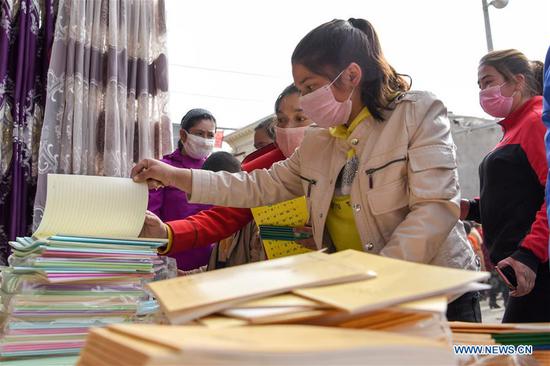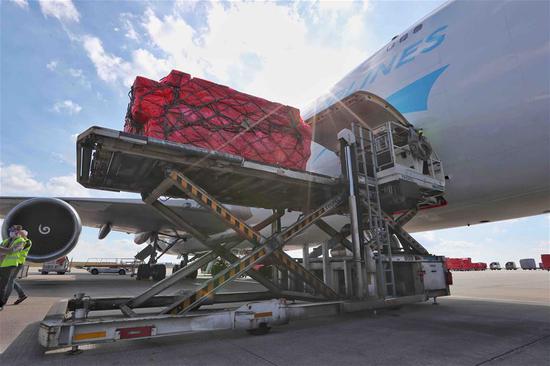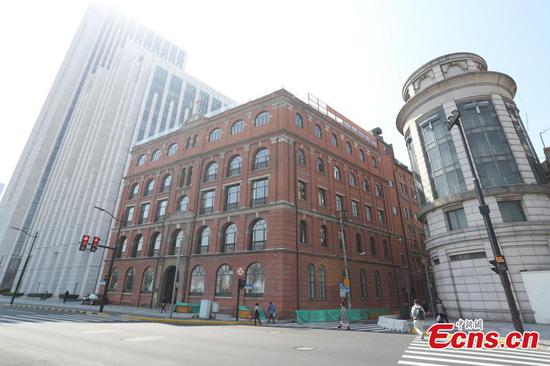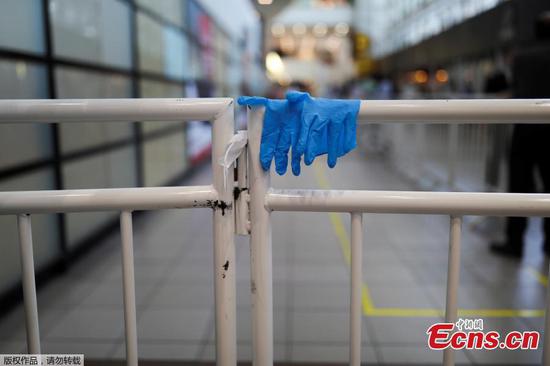Timely measures calm jittery bourses amid rising row over globalization
Policy commitments and timely intervention by monetary authorities in China have helped douse the fires of another global financial crisis and calmed the jittery financial markets, amid the novel coronavirus outbreak, experts said on Thursday.
Global equity and commercial markets were in turmoil this week despite the market stabilization measures announced by several governments as the outbreak spread to more regions and geographies.
"It is still too early to say if a global financial crisis has broken out, or it may be just a prelude," said Yu Yongding, a member of the China Finance 40 Forum and a global council member of the Chinese Academy of Social Sciences.
China had announced expansionary monetary and fiscal policies to curb the downturn risks at a very early stage of the virus outbreak. Most of these measures were quite different from the traditional methods to stimulate demand.
However, additional action is still required by China to offset the possible disruptions to external supplies due to the rising anti-globalization sentiment and deteriorating global economic outlook, said Yu.
Though economic growth fell in China last month, most of the experts expect it to rebound quickly. The epidemic is expected to have shaved off nearly 1.2 percent of the country's annual GDP, due to the sharp decline in consumption during the first two months, Zhu Min, head of Tsinghua University's National Institute of Financial Research and former IMF deputy managing director, said at a meeting of the China Development Forum on Thursday.
Policymakers should focus on boosting GDP growth and stabilizing asset prices and maintaining relatively steady interest rate spreads. Such measures will benefit the Chinese yuan and A shares, said Huang Haizhou, managing director at China International Capital Corp.
"Obviously, China needs to consider a new round of supportive policies, but should not be in a hurry to cut interest rates like other global central banks," said Robin Xing, chief economist for China at Morgan Stanley.
Additional actions that policymakers could consider are steps to shore up fiscal deficit and increase financing through special bonds issued by central and local governments. The higher deficit could support tax exemptions, issue of consumption coupons or increase infrastructure investment, he said.
"When major central banks are cutting interest rates nearly to zero, the higher returns offered by Chinese sovereign assets will become more attractive to investors. This means that it is an opportune time to issue special Treasury bonds," said Xing.
According to Morgan Stanley data, since the middle of January, 18 of the 30 major central banks have eased monetary policy. The global weighted average policy rate has declined by 54 basis points since December 2019 and by 166 basis points since December 2018.
The U.S.-based brokerage said 25 more central banks may go in for rate cuts by the end of the second quarter. Most of the G4(U.S., EU, UK and Japan) central banks have returned to the quantitative easing path.
Strong commitments from policy makers also include a sizable fiscal expansion plan, and Morgan Stanley economists expect that in the G4 economies plus China, the combined primary fiscal balance will rise by 280 basis points or by $1.7 trillion. The G4 and China deficit will reach 6.9 percent this year, higher than the post-crisis rate of 6.5 percent in 2009.
The U.S. Federal Reserve announced late on Wednesday that it was launching an emergency program-the Money Market Mutual Fund Liquidity Facility (MMLF), to help money market funds meet redemption demands from households and other investors by adding liquidity. The U.S. Treasury Department will also provide $10 billion of credit protection. Hours before the Fed's new action, the European Central Bank also took a late-night decision to start a 750 billion euros ($820 billion) bond purchase program to calm markets.
The U.S. Fed launched three emergency lending facilities within two days. On Tuesday, it decided to buy commercial paper to ease market turmoil and encouraged primary dealers to extend credit to households and businesses. The Fed also made the terms of its discount window more attractive by cutting the discount window primary rate by 150 basis points and lowering the reserve requirement ratio by 10 points, so that banks would be reluctant to use the discount window as a source of funding.
Interestingly, the Fed had used the same monetary tools during the 2008 global financial crisis. The package of financial stabilization measures was slashed after the Fed cut its policy rates nearly to zero on Sunday, with a plan to buy $700 billion in securities to ease fear from Wall Street sell-offs amid the widening spread of the novel coronavirus.


















































